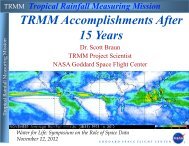ALOS Data Users Handbook
ALOS Data Users Handbook
ALOS Data Users Handbook
You also want an ePaper? Increase the reach of your titles
YUMPU automatically turns print PDFs into web optimized ePapers that Google loves.
<strong>ALOS</strong> <strong>Data</strong> <strong>Users</strong> <strong>Handbook</strong>5.3 Operation Priorities<strong>ALOS</strong> satellite operation will be performed in accordance with the following operation priority:1. Satellite emergency operation2. Housekeeping operation3. Disaster area monitoring4. Calibration/Validation5. Basic observation*6. Japanese governmental use unique7. <strong>Data</strong> Node use unique8. Research purpose use unique9. Observation requests other than abovePlanned by JAXARequested by Emergency Observation/AcquisitionRequested by normal Observation/Acquisition*: Define basic observation modes (see section 5.8) to support multiple users observation requests.Operation priorities for direct data acquisition by foreign ground stations are as follows:1. AVNIR-2 or ScanSAR (120M) data reception2. PALSAR direct downlink mode (20m resolution) or PRISM high compressed mode with120Mbps3. HSSR reproduction of above 1.and 2.4. Half speed reproduction with HSSR3. and 4. are limited to disaster monitoring and joint cal/val applications. HSSR use is limited up to 80seconds per orbit for all DT stations. In principle, JAXA will support reception of DT data by foreign groundstations whenever there is not a conflict with <strong>ALOS</strong> operations via DRTS and HSSR.5.4 Outline of Sensor OperationsBasic operations for the mission instruments are planned as follows:• Land and Day time: Observation with one to three sensors of PRISM, AVNIR-2 and PALSAR• Land and Night time: Observation with PALSAR, Calibration with PRISM and AVNIR-2 (as5-3


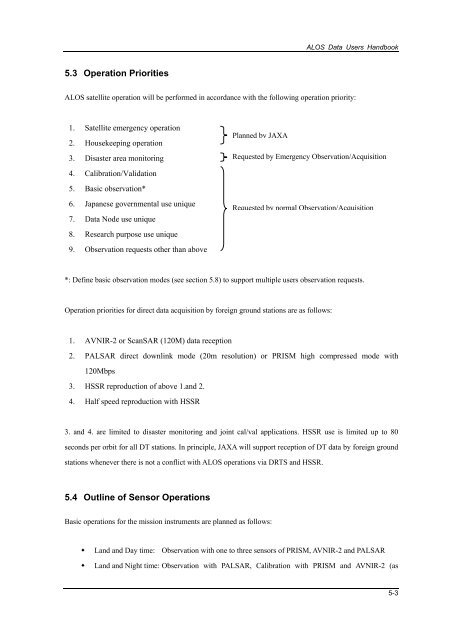
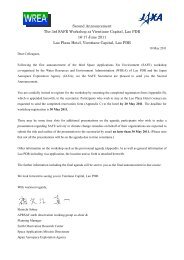
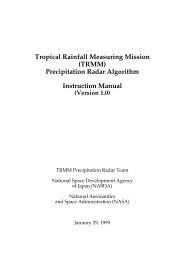


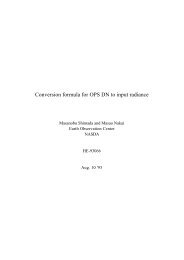

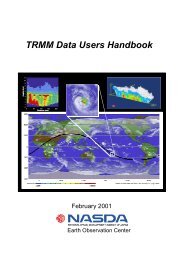


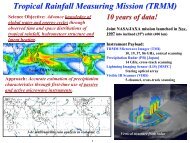
![4.12.2a_Tibet_Wu Guoxiong Tibet-CEOP.ppt[]](https://img.yumpu.com/35802437/1/190x135/4122a-tibet-wu-guoxiong-tibet-ceopppt.jpg?quality=85)
